256 books by Moore and 7
start with B
256 books by Moore and 7
256 books by Moore
7 start with B start with B
7 start with B start with B

Backgrounds of English Literature, 1700-1760
Cecil Moore
University of Minnesota Press, 1953
Backgrounds of English Literature, 1700-1760 was first published in 1953. Minnesota Archive Editions uses digital technology to make long-unavailable books once again accessible, and are published unaltered from the original University of Minnesota Press editions.The five studies collected in this volume have the common purpose of establishing a background for an understanding of eighteenth-century English literature. Some of the most popular ideas and ideals of the period are traced to their sources in contemporary philosophy, science, politics, and religion.All of the studies relate in some way to what the seventeenth century called the climate of opinion. They confirm the observation of Shelley that all writers are subjected to “a common influence which arises out of an infinite combination of circumstances belonging to the time in which they live.” All the studies belong to that older style of literary investigation to which scholarship owes its name and to which every student interested in basic ideas and the origins of concepts will sooner or later wish to turn.The first two studies, “Shaftesbury and the Ethical Poets” and “The Return to Nature in English Poetry of the Eighteenth Century,” throw as much light on the Romantic poetry of the nineteenth century as they do on the poetry of the eighteenth. The nature worship that one thinks of as peculiarly Wordsworthian is shown to lie at the heart of deism, the rationalistic philosophy of a century earlier.In “Whig Panegyric Verse,” the ideals of the Whig party, as expressed by poets of the time, are examined in relation to Shaftesbury’s moral philosophy. In “John Dunton: Pietist and Impostor,” the morbid gloom familiar in the “graveyard poets” is seen to reflect a widespread popular taste. That the melancholia of the period was so common as to be considered a national characteristic appears from “The English Malady,” which is largely concerned with the medical literature of the time.
[more]
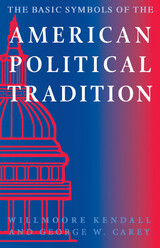
The Basic Symbols of the American Political Tradition
Willmoore Kendall
Catholic University of America Press, 1995
This thought-provoking book contributes important arguments to the fundamental debate over the place of equality in our political self-understanding. It will continue to be of immense interest to all serious students of American political thought.
[more]
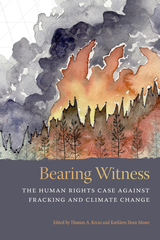
Bearing Witness
The Human Rights Case Against Fracking and Climate Change
Thomas A. Kerns
Oregon State University Press, 2021
Fracking, the practice of shattering underground rock to release oil and natural gas, is a major driver of climate change. The 300,000 fracking facilities in the US also directly harm the health and livelihoods of people in front-line communities, who are disproportionately poor and people of color. Impacted citizens have for years protested that their rights have been ignored.
On May 14, 2018, a respected international human-rights court, the Rome-based Permanent Peoples’ Tribunal, began a week-long hearing on the impacts of fracking and climate change on human and Earth rights. In its advisory opinion, the Tribunal ruled that fracking systematically violates substantive and procedural human rights; that governments are complicit in the rights violations; and that to protect human rights and the climate, the practice of fracking should be banned.
The case makes history. It revokes the social license of extreme-extraction industries by connecting environmental destruction to human-rights violations. It affirms that climate change, and the extraction techniques that fuel it, directly violate deeply and broadly accepted moral norms encoded in the Universal Declaration of Human Rights.
Bearing Witness maps a promising new direction in the ongoing struggle to protect the planet from climate chaos. It tells the story of this landmark case through carefully curated court materials, including searing eye-witness testimony, groundbreaking legal testimony, and the Tribunal’s advisory opinion. Essays by leading climate writers such as Winona LaDuke, Robin Wall Kimmerer, and Sandra Steingraber and legal experts such as John Knox, Mary Wood, and Anna Grear give context to the controversy. Framing essays by the editors, experts on climate ethics and human rights, demonstrate that a human-rights focus is a powerful, transformative new tool to address the climate crisis.
On May 14, 2018, a respected international human-rights court, the Rome-based Permanent Peoples’ Tribunal, began a week-long hearing on the impacts of fracking and climate change on human and Earth rights. In its advisory opinion, the Tribunal ruled that fracking systematically violates substantive and procedural human rights; that governments are complicit in the rights violations; and that to protect human rights and the climate, the practice of fracking should be banned.
The case makes history. It revokes the social license of extreme-extraction industries by connecting environmental destruction to human-rights violations. It affirms that climate change, and the extraction techniques that fuel it, directly violate deeply and broadly accepted moral norms encoded in the Universal Declaration of Human Rights.
Bearing Witness maps a promising new direction in the ongoing struggle to protect the planet from climate chaos. It tells the story of this landmark case through carefully curated court materials, including searing eye-witness testimony, groundbreaking legal testimony, and the Tribunal’s advisory opinion. Essays by leading climate writers such as Winona LaDuke, Robin Wall Kimmerer, and Sandra Steingraber and legal experts such as John Knox, Mary Wood, and Anna Grear give context to the controversy. Framing essays by the editors, experts on climate ethics and human rights, demonstrate that a human-rights focus is a powerful, transformative new tool to address the climate crisis.
[more]

Black Athena Writes Back
Martin Bernal Responds to His Critics
Martin Bernal
Duke University Press, 2001
In Black Athena Writes Back Martin Bernal responds to the passionate debates set off by the 1987 publication of his book Black Athena. Producing a shock wave of reaction from scholars, Black Athena argued that the development of Greek civilization was heavily influenced by Afroasiatic civilizations. Moreover, Bernal asserted that this knowledge had been deliberately obscured by the rampant racism of nineteenth-century Europeans who could not abide the notion that Greek society—for centuries recognized as the originating culture of Europe—had its origins in Africa and Southwest Asia.
The subsequent rancor among classicists over Bernal’s theory and accusations was picked up in the popular media, and his suggestion that Greek culture had its origin in Africa was widely derided. In a report on 60 Minutes, for example, it was suggested that Bernal’s hypothesis was essentially an attempt to provide blacks with self-esteem so that they would feel included in the march of progress.
In Black Athena Writes Back Bernal provides additional documentation to back up his thesis, as well as offering persuasive explanations of why traditional scholarship on the subject remains inaccurate and why specific arguments lobbed against his theories are themselves faulty.
Black Athena Writes Back requires no prior familiarity with either the Black Athena hypothesis or with the arguments advanced against it. It will be essential reading for those who have been following this long-running debate, as well as for those just discovering this fascinating subject.
The subsequent rancor among classicists over Bernal’s theory and accusations was picked up in the popular media, and his suggestion that Greek culture had its origin in Africa was widely derided. In a report on 60 Minutes, for example, it was suggested that Bernal’s hypothesis was essentially an attempt to provide blacks with self-esteem so that they would feel included in the march of progress.
In Black Athena Writes Back Bernal provides additional documentation to back up his thesis, as well as offering persuasive explanations of why traditional scholarship on the subject remains inaccurate and why specific arguments lobbed against his theories are themselves faulty.
Black Athena Writes Back requires no prior familiarity with either the Black Athena hypothesis or with the arguments advanced against it. It will be essential reading for those who have been following this long-running debate, as well as for those just discovering this fascinating subject.
[more]
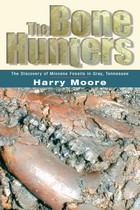
The Bone Hunters
The Discovery Of Miocene Fossils In Gray, Tennessee
Harry L. Moore
University of Tennessee Press, 2004
In the spring and summer of 2000, geologists working for the Tennessee Department of Transportation made an extraordinary find as they examined soil at a routine road construction project: the digging at Gray, Tennessee, had uncovered a fossil site containing bones that would turn out to be at least five million years old. Harry Moore and his colleagues, along with researchers from the state and the University of Tennessee, were stunned as they unearthed the fossilized remains of tapirs, elephants, rhinoceroses, alligators, and other long-dead animals. What was at first thought to be an Ice Age site ten to twenty thousand years old proved to be much, much older.
The Bone Hunters recounts the fascinating details of a remarkable chance discovery. In his engaging firsthand account, Moore writes of the people behind the excavation of the site and how their efforts helped save valuable artifacts for ongoing study. Numerous photographs capture the excellent condition of fossils at Gray. Moore also describes the contours of what the ancient landscape may have looked like and details the governmental action that ultimately preserved this Tennessee treasure.
Harry Moore manages the Tennessee Department of Transportation’s Geotechnial Engineering office in Knoxville. His previous books are A Roadside Guide to the Geology of the Great Smoky Mountains National Park, A Geologic Trip Across Tennessee by Interstate 40, and Discovering October Roads: Fall Colors and Geology in Rural East Tennessee (co-written with Fred Brown).
The Bone Hunters recounts the fascinating details of a remarkable chance discovery. In his engaging firsthand account, Moore writes of the people behind the excavation of the site and how their efforts helped save valuable artifacts for ongoing study. Numerous photographs capture the excellent condition of fossils at Gray. Moore also describes the contours of what the ancient landscape may have looked like and details the governmental action that ultimately preserved this Tennessee treasure.
Harry Moore manages the Tennessee Department of Transportation’s Geotechnial Engineering office in Knoxville. His previous books are A Roadside Guide to the Geology of the Great Smoky Mountains National Park, A Geologic Trip Across Tennessee by Interstate 40, and Discovering October Roads: Fall Colors and Geology in Rural East Tennessee (co-written with Fred Brown).
[more]
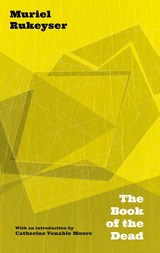
The Book of the Dead
Muriel Rukeyser
West Virginia University Press, 2018
Written in response to the Hawk’s Nest Tunnel disaster of 1931 in Gauley Bridge, West Virginia, The Book of the Dead is an important part of West Virginia’s cultural heritage and a powerful account of one of the worst industrial catastrophes in American history. The poems collected here investigate the roots of a tragedy that killed hundreds of workers, most of them African American. They are a rare engagement with the overlap between race and environment in Appalachia.
Published for the first time alongside photographs by Nancy Naumburg, who accompanied Rukeyser to Gauley Bridge in 1936, this edition of The Book of the Dead includes an introduction by Catherine Venable Moore, whose writing on the topic has been anthologized in Best American Essays.
Published for the first time alongside photographs by Nancy Naumburg, who accompanied Rukeyser to Gauley Bridge in 1936, this edition of The Book of the Dead includes an introduction by Catherine Venable Moore, whose writing on the topic has been anthologized in Best American Essays.
[more]
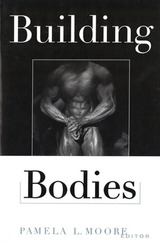
Building Bodies
Moore, Pamela L
Rutgers University Press, 1997
Building Bodies is an exciting collection of articles that strive toward constructing theoretical models in which power, bodies, discourse, and subjectivity interact in a space we can call the "built" body, a dynamic, politicized, and biological site. Contributors discuss the complex relationship between body building and masculinity, between the built body and the racialized body, representations of women body builders in print and in film, and homoeroticism in body building. Linked by their focus on the sport and practice of body building, the authors in this volume challenge both the way their various disciplines (media studies, literary criticism, gender studies, film and sociology) have gone about studying bodies, and existing assumptions about the complex relationship between power, subjectivity, society, and flesh. Body building--in practice, in representation, and in the cultural imagination--serves as an launching point because the sport and practice provide ready challenges to existing assumptions about the "built" body.
[more]
READERS
Browse our collection.
PUBLISHERS
See BiblioVault's publisher services.
STUDENT SERVICES
Files for college accessibility offices.
UChicago Accessibility Resources
home | accessibility | search | about | contact us
BiblioVault ® 2001 - 2024
The University of Chicago Press









